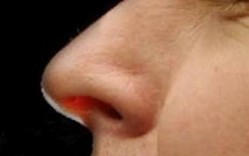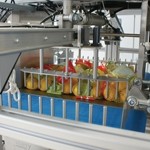New electronic nose detects fruit ripeness

The team, lead by chemistry professor Timothy Swager, has built sensors that can detect small amounts of ethylene – a gas that promotes ripening in fruit. Fitted to cardboard boxes of produce, their ripeness could then be assessed using a hand-held scanning device.
“If we can create equipment that will help grocery stores manage things more precisely and maybe lower costs by 30%, that would be huge,” said Swager.
Very expensive
Fruit distributors monitor ethylene levels in warehouses using gas chromatography or mass spectroscopy units, which cost about $1,200 each. “Right now, the only time people monitor ethylene is in these huge facilities, because the equipment is very expensive,” he said.
But Swagger has filed a patent on technology focusing on carbon nanotubes, which he hopes will slash the cost. He plans to add a radio-frequency identification chip to the sensor so it can communicate wirelessly with a hand-held device to monitor ethylene levels.
“This could be done with absolutely dirt-cheap electronics, with almost no power,” he said.
The sensors are described in the journal Angewandte Chemie.

















